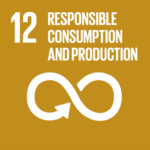New Biosynthetic pathways to microbial pigments
Blog - Published 12.12.2023
In a world without colors, life would be dull and uninspiring. Yet nearly all of the colors we use in our daily lives come from pigments derived from fossil-based chemicals. This is a major environmental concern. But there is an alternative – harnessing the natural dyes produced by plants, fungi, insects, and bacteria.
Research scientist Pradhuman Jetha at VTT is working on discovering new biosynthetic pathways to create bio-based colors. By studying the color pigments derived from Cortinarius semisanguineus mushrooms, he hopes to reconstitute these pathways in an industrially feasible host.
“In order to make it scalable, we can use the tools of synthetic biology so we can find out how these mushrooms are producing these colors and try to mimic these pathways into a microbial host so that we can produce them all the year round in a small area, in a bioreactor,” Jetha explains.
What makes this research so exciting is that the biosynthetic pathway of production for specific compounds, such as the red color pigment in the Cortinarius semisanguineus mushroom, is unknown. By unraveling this pathway at the genomic level, researchers like Jetha hope to create more economically and environmentally sustainable ways to produce much-needed compounds.
Jetha also highlights the potential for synthetic biology to enhance these molecules by tailoring the compounds with enzymes or proteins, which could create entirely new compounds.
“We can try to find enzymes from nature that can produce some kind of modification in these different colors so that we can enhance the activities of these molecules, which would be new to natural compounds and could be very beneficial for us,” he says.
The use of synthetic biology has already paved the way for producing vaccines and replacing fossil fuels with biofuels and biomaterials.
Jetha’s research is an exciting example of how synthetic biology can help us create new, sustainable, and environmentally-friendly alternatives to the everyday products we use. By harnessing the power of natural dyes and enhancing their properties through synthetic biology, we can create a more colorful, sustainable, and brighter future.
Agenda2030
By exploring natural sources of pigments and developing sustainable production methods, Jetha’s research contributes to SDG 12: Responsible Consumption and Production. This goal aims to promote more sustainable patterns of consumption and production, including reducing the use of hazardous chemicals and improving resource efficiency. Additionally, Jetha’s work also supports SDG 13: Climate Action, by reducing the reliance on fossil-based chemicals and contributing to the development of more sustainable alternatives. Furthermore, the use of synthetic biology in this research aligns with SDG 9: Industry, Innovation, and Infrastructure, which seeks to promote sustainable industrialization and encourage innovation in industry.



